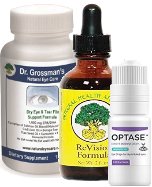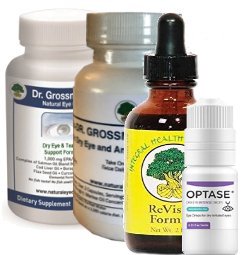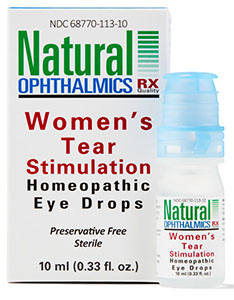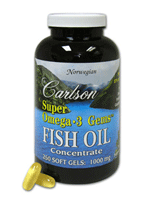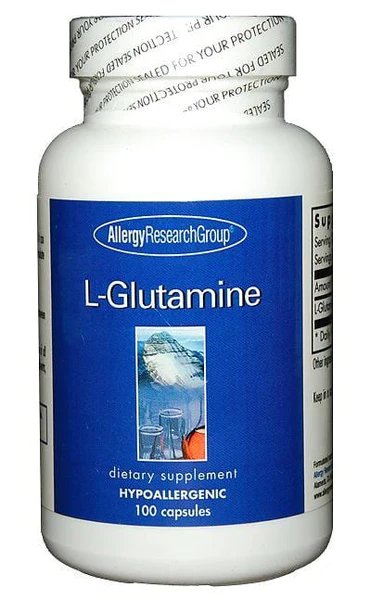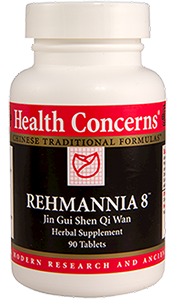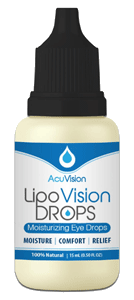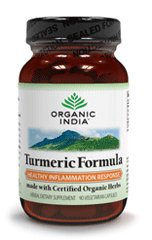Sjogren's Syndrome
Pathology Symptoms Causes Treatment Complementary Approach Reviews
Autoimmune Disorder
Sjogren's syndrome is an autoimmune disorder in which the body produces antibodies that attack its fluid-producing tissues and organs. The symptoms associated with Sjogren's are caused by the infiltration of immune-system cells, usually B and T lymphocytes, into the glands responsible for secreting fluid. This particular autoimmune illness appears as inflammation in certain glands of the body that produce moisture such as the (lacrimal glands) that leads to decreased water production for tears and eye dryness and the salivary glands (including the parotid glands) that leads to mouth dryness.
Vitamins & Supplements
Discount Packages |
Essential |
Essential |
Essential |
Essential |
Very Important |
Very Important |
Important |
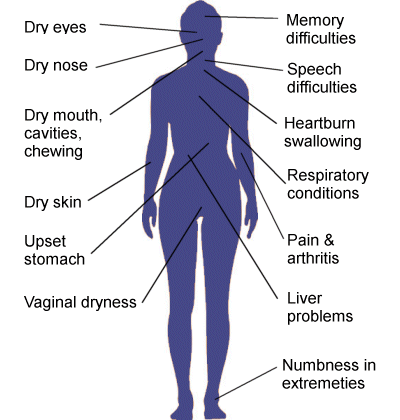
Primary Sjogren's syndrome, existing as a disorder in its own right, involves gland inflammation (resulting dry eyes and mouth, etc.) and is not associated with a connective tissue disease referred to as primary Sjogren's syndrome.
Secondary Sjogren's syndrome involves not only gland inflammation, but may develop years after the onset of an associated rheumatic disorder of connective tissue disease such as systemic lupus, rheumatoid arthritis erythematosus or scleroderma.
Symptoms
The most common symptoms of Sjögren’s are dry eyes and dry mouth. The symptoms include the following:
- Generalized dryness, including chronic dryness and possibly inflammation of the eyes and mouth. In addition to mouth dryness, inflammation of the salivary glands can lead to dental decay, mouth sores and swelling, cavities, gum disease, difficulty in swallowing (gastroesophageal reflux disease), stones, and/or infection of the parotid gland inside of the cheeks. It includes dry skin, including external genitalia, vaginal dryness, and dryness in the ear, nose, and throat .
- Prolonged fatigue, chronic pain, and neuropathies
- Decrease in gastrointestinal secretions involving the kidneys, liver, and pancreas. This can result in poor absorption of nutrients as a lack of availability of essential enzymes to break down food in the small intestine. Patients with SS frequently have irritable bowel syndrome-like symptoms (IBS). Gastrointestinal disease may occur in one quarter of the patients and include dysphagia, gastritis, motility disorders, pancreatitis, pancreatic insufficiency, pernicious anemia, autoimmune hepatitis, and symptoms consistent with IBS such as abdominal pain, diarrhea, constipation, bloating, flatulence, vomiting, and nausea.
- Joint pain as well as joint swelling and stiffness
- Persistent dry cough and a sore and cracked tongue
- Thyroid problems such as Hashimoto's thyroiditis, Raynaud's phenomenon, lymph node enlargement
- Kidney, nerve, and muscle disease
- Vasculitis. In rare cases, vasculitis can occur. Vasculitis is an inflammatory condition of the blood vessels that damages the tissues of the body supplied by these vessels. Complications depend on which blood vessels, organs, or other body systems are affected.
- Other. Sjögren’s can also affect other parts of the body, including the inflammation of the lining of the breathing passages, the peripheral nervous system, and the brain. Patients with SS have a higher risk of developing lymphoma.
Pathology
Immune-system cells, usually B and T lymphocytes (small white blood cells), infiltrate the glands responsible for secreting body fluids. This infiltration causes inflammation in the glands that results in decreased water production throughout the body.
The condition is systemic. It affects the entire body. Not only may it be evidenced by dry mouth (xerostomia) and dry eyes, it can be related to keratoconjunctivitis sicca, rheumatoid arthritis, and an excess of certain proteins in the blood (hypergammaglobulinemia). The lymph nodes, lungs, kidneys, liver, bone marrow, muscle, and skin can all be involved as well.
Once symptoms appear, they tend to remain steady, or worsen, and only rarely do they go into remission. Additionally, while some people experience mild discomfort, others suffer debilitating symptoms that greatly impair their overall function. Early diagnosis and proper treatment are important, as complications can be serious, and swift action can greatly improve a patient’s quality of life.
Causes
There are more than 80 different autoimmune disorders in which a person’s immune system mistakenly identifies healthy tissues as an invader and creates antibodies to attack it. The exact cause or causes of Sjögren’s syndrome and other autoimmune disorders is unknown.
One theory, however, is that microorganisms (bacteria or viruses), or a toxin, such as a pharmaceutical drug or other chemical, may trigger changes in the body that confuse the immune system.1 This may occur more often in people who carry genes that increase their risk for autoimmune disorders.2
Having any autoimmune disorder is a risk for secondary Sjögren’s syndrome; nearly 25% of patients with autoimmune diseases develop additional autoimmune diseases. 3
Helicobacter pylori infection has been implicated in onset of Sjogren Syndrome. 4
Conventional Treatment
There are medications that can be prescribed that help relieve the dry eyes such as Restasis, and other medications for dry mouth such as pilocarpine (Salagen) and cevimeline (Evoxac). Sometimes anti-inflammatories such as Prednisone and autoimmune suppressants such as azathioprine and cyclophosphamide are prescribed.
Eye doctors use the Schirmer test, measuring tear production, and Rose Bengal and Lissamine Green eyedrops to evaluate the cornea surface. Dentists measure saliva flow and production including a biopsy of the salivary gland.
While treatments are primarily based on symptoms, it is important to monitor for lymphoma.
Misdiagnosis
It is estimated that Sjogren’s is misdiagnosed in more than half of affected adults. Data suggest that patients experience symptoms for an average of 3.9 years before a diagnosis of SS is made. Such delays in diagnosis can be a source of psychological distress from unexplained symptoms.
While there is no one single test for Sjögren’s, doctors can generally trace the symptoms of primary SS to problems with the tear and saliva glands. When suspicious of SS, eye doctors use the Schirmer test to measure tear production and diagnostic dyes (rose bengal and lissamine green) to evaluate the corneal surface for tear production.
Medical or physical exams can also be helpful with diagnosis. Specific blood tests include:
- Analysis for antinuclear antibodies (ANA test) that are unusual antibodies directed against the nucleus of the cell. About 70% of Sjögren’s patients have a positive ANA test result.
- Abnormal blood levels of inflammation biomarkers.
- Sedimentation rate, detecting whether red blood cells are tending to clump.
- C-reactive protein; concentrations increase in the presence of inflammation.
- Thyroid levels.
- Erythrocyte sedimentation rate (ESR), a marker of overall inflammation.
- Immunoglobulins (IG), a test for elevated proteins.
- Other blood tests include rheumatoid factor (RF) (60–70% of Sjogren’s patients test positive for RF), SS-A (or Ro) and SS-B (or La) (40% of patients are positive for SS-B, which may also be found in lupus patients).
- Other tests include urine test, chest x-ray, and saliva-gland biopsy, which can be performed by a dentist to measure saliva production and flow.
People with the primary Sjögren’s are more likely to have certain antibodies circulating in their blood than people with the secondary type. The Sjö test (Bausch & Lomb, Rochester, NY, USA) is a blood test for the early detection of SS. This test analysis includes a number of early biomarkers along with the classic Sjögren’s biomarkers. The cumulative sensitivity of the Sjö panel has been 89.9%.
Sjögren’s may appear to be similar to sialadenitis, an infection of the salivary glands. Sialadenitis may include gland inflammation, but more commonly consists of inflammation that is scattered within the body and in the interstitial spaces between the body's structures, especially in front of the ear and under the chin.
Complementary Approach
There are a number of great nutrients, including antioxidants, herbs, vitamins, and minerals that help support natural tear production, internally moisten the body, reduce inflammation, and help with overall water metabolism throughout the body. These can all help reduce the symptoms of Sjögren’s naturally.
- Anti-inflammatories. There is some evidence that reducing inflammation is helpful.5.
- Supplement with helpful nutrients and eyedrops.
- Diet & lifestyle protocol - see our recommendations for healthy vision for more detailed recommendations
- Nibble on lemons or natural low sugar candies to stimulate saliva production.
- Use toothpaste without detergents such as sodium lauryl sulfate or cocamidopropyl betaine to reduce mouth irritation.
- Combat nose dryness with salt water (saline) solutions.
- Drink plenty of water. Small sips frequently is more effective and comfortable.
- Use a humidifier to add moisture to the air in your bedroom
- Managing stress is important for managing this condition
- Pay attention to drugs that harm the eyes
- Avoid strongly flavored foods and soft drinks that may irritate your dry mouth or interfere with digestion.
Sjogren's News
Want to learn more? See our blog for news on Sjogren's.
Related Conditions
Here are some similar conditions - they have similar symptoms, or they are due to similar causes, or they may respond to similar treatments.
- Dry Eyes
- Rheumatic diseases such as rheumatoid arthritis
- Extra-glandular conditions such as enlarged parotid gland
- Dry mouth, dry skin, other tissue dryness
- Gastrointestinal disease
- Anemia
- Lymphoma
- Hepatitis C
- Immune deficiency conditions
Footnotes and Research
Footnotes
1. Siddiqui, H., Chen, T., Aliko, A., Mydel, P.M., Jonsson, R., et al (2016). Microbiological and bioinformatics analysis of primary Sjogren’s syndrome patients with normal salivation. J Oral Microbiol, 8:10.3402.
2. Tanakchi, S. (2018). Sjögren's syndrome. Pathology Outlines, Mar. 12.
3. Cojocaru, M., Cojocaru, I.M., Silosi, I. (2010). Multiple autoimmune syndrome. Maedica (Buchar), Apr;5(2):132-4.
4. Izzotti, A., Saccà, S.C., Bagnis, A., Recupero, S.M. (2009). Glaucoma and Helicobacter pylori infection: correlations and controversies. Br J Ophthalmol, Nov;93(11):1420-7.
5. Ciutin, C., Ostas, A., Cojocaru, V.M., Walsh, S.B., Isenberg, D.A. (2015). Advances in the treatment of ocular dryness associated with Sjögren׳s syndrome. Semin Arthritis Rheum, Dec;45(3):321-7.
 info@naturaleyecare.com
info@naturaleyecare.com



 Home
Home



 Vision
Vision Vision
Vision



 Health
Health Health
Health Research/Services
Research/Services Pets
Pets About/Contact
About/Contact

